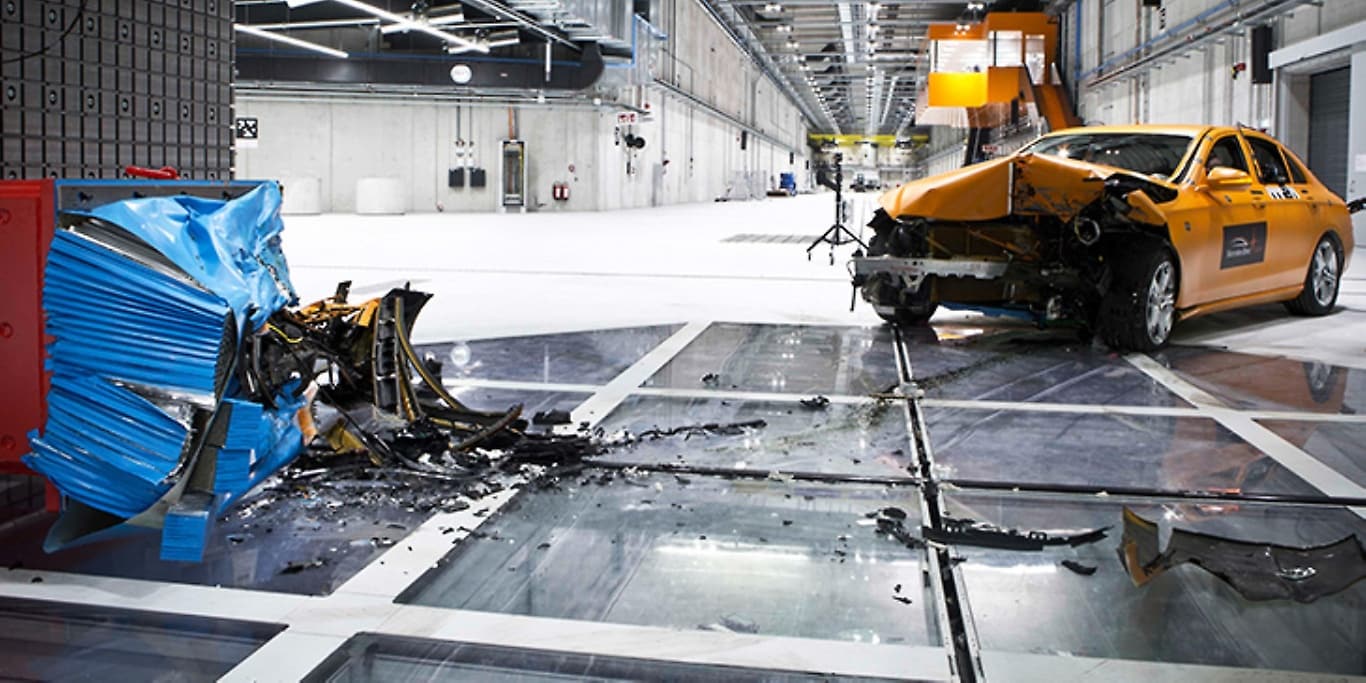Sixty years of crash testing — but are we also prepared for the next 60 years?
Such technology was still unthinkable in the early years of crash testing, when the tests were still conducted in the open air as a matter of course. “The first crash hall wasn’t built until 1973,” says Heidbrink. “It made everything much more systematic and professional, besides ensuring the tests were unaffected by the weather.”
A veritable quantum leap was achieved in late 2016, when the new building of today’s Technology Center for Vehicle Safety was inaugurated. The new facility didn’t just have a new name, the building was much larger than the former one and it had four highly versatile crash lanes that ended in a large unsupported angular area. Since then, crash tests can also be made with two simultaneously moving vehicles that collide with one another with high precision. This enables typical accidents at intersections to be re-enacted, for example.
The new facility also has a higher testing capacity than the old one. In 2012, the experts managed to conduct a maximum of 465 crash tests a year in the old hall. “By contrast, the number of tests with complete vehicles is nearing 1,000 in the new halls,” says Struck.
The modernization project that ended with the completion of today’s Technology Center for Vehicle Safety was initiated by Norbert Schaub. He heads Daimler’s testing department for passive safety and vehicle functions and is very proud of the things that the technology center can now do.
“The constellation of tests that are conducted here at the TFS meet the requirements of all of the legal regulations and safety ratings worldwide. In addition, it makes a number of Mercedes-specific tests that result from the findings of our own accident research. Many people don’t know that,” he says. “Even before the first crash test is made, a lot of work goes into computing a vehicle’s design.”






